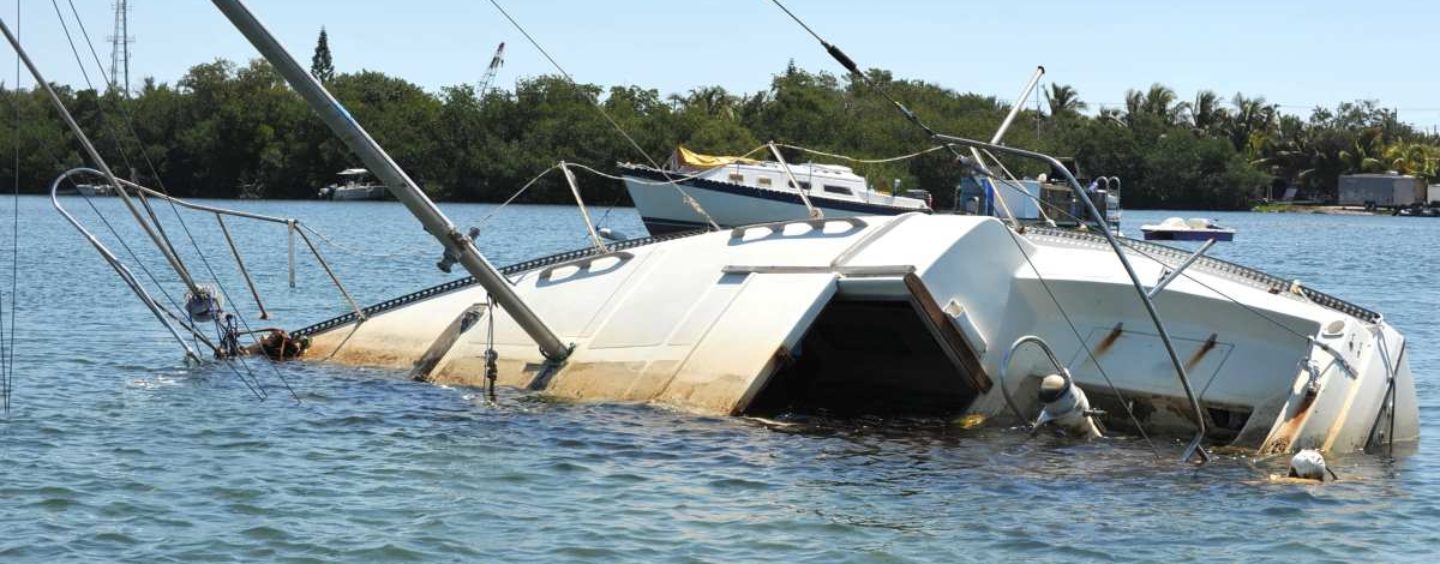Rules on abandoned watercraft and powers of disposal
As the owner of a boat, it is your responsibility to maintain it in a seaworthy condition, equip it with the correct safety equipment, and operate it safely. But what if your boat is still suffering from an unfortunate incident last summer? Or what if you have been too busy to rescue it from being stranded on a sand bar or lost in the mangroves? Or the funds are running a little too low to do those repairs? Maybe it is starting to cost more than it is worth?
If your boat is looking a little worse for wear, then it is your responsibility to bring your vessel up to seaworthy condition, or to remove it from the water. This may be costly, or take time, but it is not only for your own safety, but the safety of all other waterways users.
Under Queensland maritime safety laws, a shipping inspector can require that your boat is surveyed and the necessary repairs undertaken. Or, if it has gone too far, a declaration of unseaworthiness may be issued, and you will no longer be able to use your boat. You can also be directed to remove your boat from the water so that it does not pose a hazard to navigation, or a risk of damage to the environment or any other water users. Be careful once you have received any notices or directions, because if you do not comply you can be penalised by fines and court enforcement orders.
Now, it is not all doom and gloom. Take a look at your boat. Do you have the correct safety equipment? Is your boat seaworthy and well maintained? Does it present a safety risk? It might only take a couple of repairs for you to be ready to take that fishing trip.
Maybe your boat is past the point where a few repairs will solve the problem. It has been moored down the creek, collecting water, and rusting up for a little too long. It is still your responsibility. If you cannot be identified as the owner of the vessel, you might just find that one day it will be gone.
If a derelict vessel represents a hazard to navigation or may cause damage to the environment, then the abandoned property can be removed immediately and a seizure notice advertised only afterwards. This applies to abandoned ships, and also to any part of a ship or other property. Unfortunately, if it is neglected, sometimes a small boat can cause a very big problem – possibly resulting in fines, mandatory repairs, and massive unexpected costs for the owner.
It is not just boats that are subject to this type of regulation. Any watercraft can be deemed to be abandoned property if it is reasonably believed to be abandoned, lost or stranded in Gold Coast waters – whether it represents a hazard or not. According to the definition of watercraft in the Transport Infrastructure Act 1994, this includes from boats and jet skis, down to kayaks and surfboards. If property is suspected to be abandoned, the Gold Coast Waterways Authority will take reasonable steps to locate the owner. If your property is suspected to be abandoned and has been removed, you can claim it back. But there are expenses associated; it might just be the cost of publishing a notice, or the costs spent retrieving and storing your property. If abandoned property is not claimed, or it is of insufficient value to warrant the publishing of a notice, then it may be sold or destroyed – with the proceeds of any sale being used to recoup some of the costs expended in maintaining Gold Coast waterways.
The purpose of these powers is not to try and take your kayaks or beloved tinnies. It is so that, in a storm, a wayward vessel does not come crashing into yours, only to find that the owner cannot be identified and you are stuck with the repairs; or that you are not having to weave in and out of partially submerged derelict dinghies hoping to save your new gel coat from a nasty scratch. These laws exist for waterways users and their property. So how can you do your bit?
Remember that maintenance, responsibility and care are key: Maintain your boat and keep it seaworthy. Be a responsible owner. Make sure your watercraft identifies you as the owner with your contact details – whether through current registration and symbols, or owner’s label if not registered. And take care of your property. Stow your paddleboard or kayaks safely at the end of the day.
By Anthony Stanton and Kendall Messer
Pacific Maritime Lawyers






























